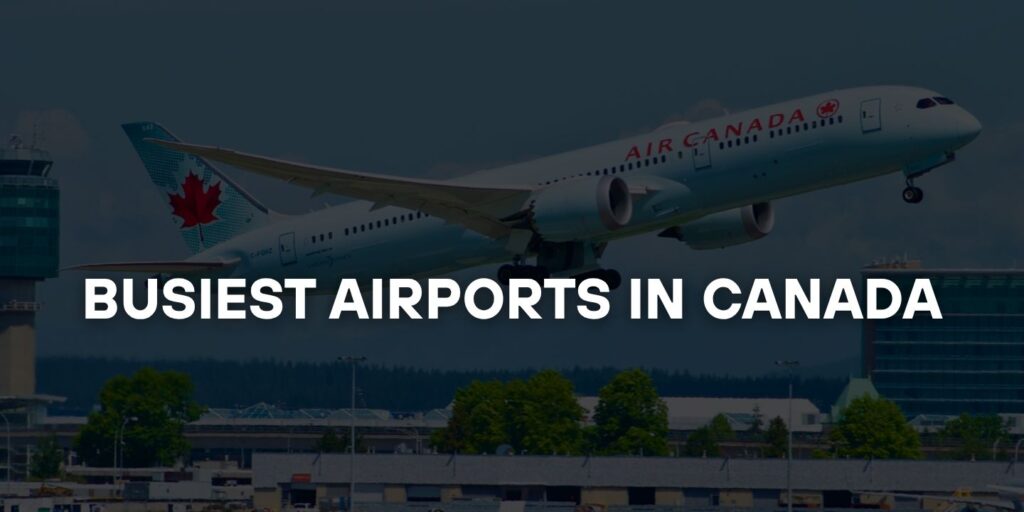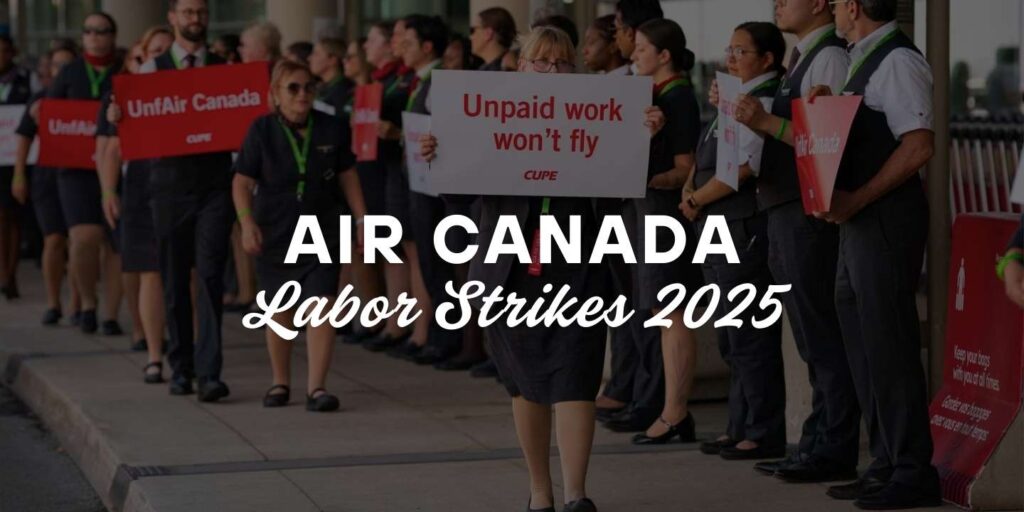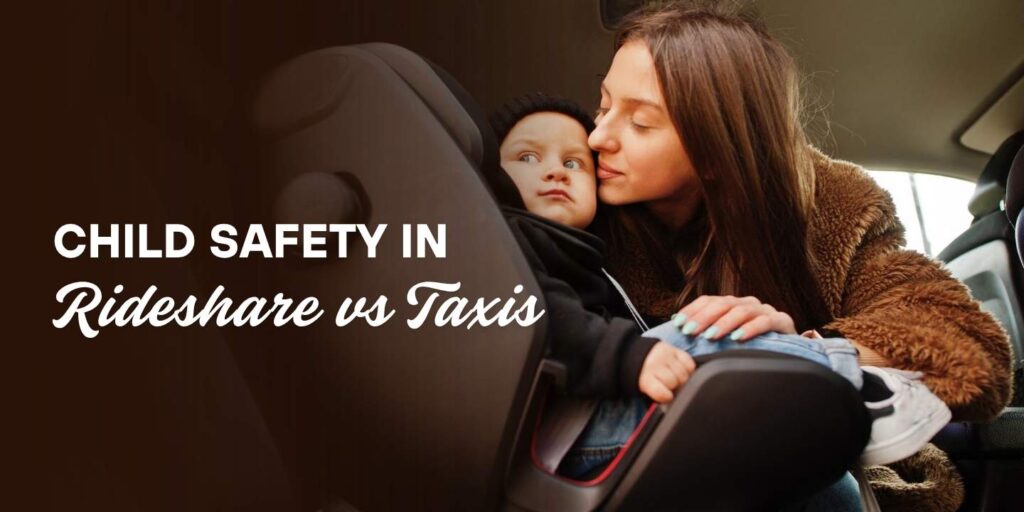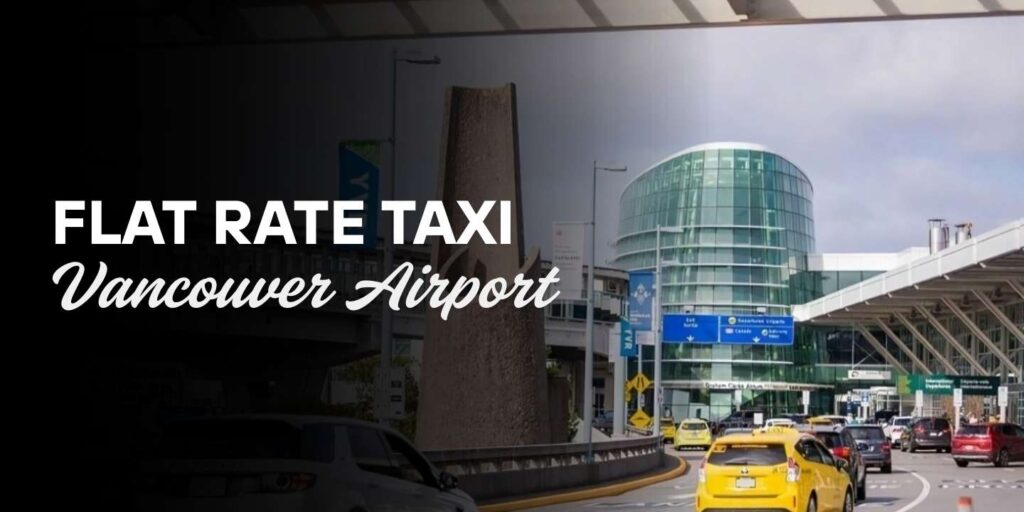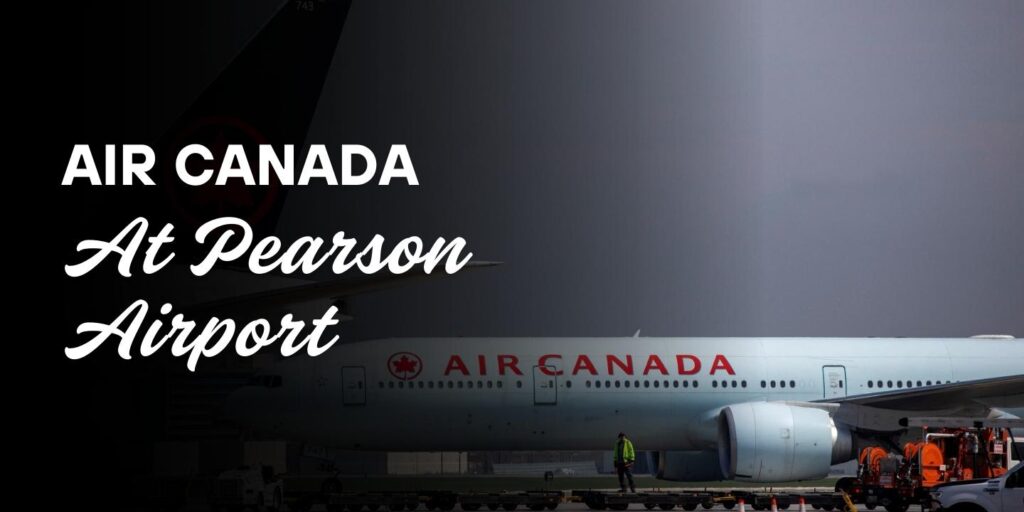7 Busiest Airports in Canada – What You Should Know
7 Busiest Airports in Canada: What Travelers Should Know in 2025 Canada has some of the busiest airports in North America, whether you’re travelling domestically, connecting to the United States, or coming from abroad. Millions of travellers are connected annually by these transport hubs, which range from the massive Toronto Pearson International Airport to the picturesque Vancouver International Airport. The top 5 busiest airports in Canada are listed in this blog along with important metrics and useful advice for travellers. Toronto Pearson International Airport (YYZ) – Toronto, Ontario Passenger traffic (2024): 43 millionActive Airlines: 46Destinations covered: 147 Toronto Pearson International Airport, which is ranked among the top 30 in the world, is at the top of the list. It is the primary international entry point to the nation and is only 25 kilometres from downtown Toronto. Major airlines like Air Canada and WestJet operate their hubs here, and Pearson is a true global link with two sizable terminals (T1 and T3) that cover a wide range of destinations across the globe. It is also a major hub for connecting flights throughout North America and the most popular point of entry for visitors arriving in Ontario. Passenger tip: There are many food options, free Wi-Fi, and shopping options. Additionally, the UP Express train provides excellent access to Downtown. Vancouver International Airport (YVR) – Vancouver, British Columbia Passenger traffic (2024): Over 25 millionActive Airlines: 31Destinations covered: 75 The second-busiest airport in Canada, Vancouver International Airport (YVR), is frequently listed as one of the top airports in North America. It is a popular tourist destination because of its glassy terminals, local art exhibits, and views of the surrounding mountains. With several daily flights to Hong Kong, Tokyo, and Shanghai, YVR is primarily utilised as an international airport for flights to Asia, making it a significant hub for connections to the Asia-Pacific area. The SkyTrain (Canada Line) makes it easy to get to the airport, which is only 12 km from downtown Vancouver. Passenger tip: Don’t miss the striking aquarium in the arrivals hall or the Indigenous art displays throughout the terminal. Montréal–Trudeau International Airport (YUL) – Montréal, Quebec Passenger traffic (2024): Around 21 millionActive Airlines: 31Destinations covered: 93 Montréal–Trudeau International Airport (YUL), which serves Canada’s second-largest city, is a major hub for travellers speaking English and French. The airport, which links Montréal to Europe, the United States, and other nearby regions of Canada, is only around 20 kilometres from the city centre. The primary hub for Air Canada aircraft in Eastern Canada, YUL is renowned for its quick and easy customs procedures. It is now much more accessible and traveler-friendly thanks to recent improvements, such as enlarged international gates and better transit connections. Passenger tip: Try the local café options — you’ll find amazing coffee and fresh croissants that are convenient quick bites. Calgary International Airport (YYC) – Calgary, Alberta Passenger traffic (2024): Over 18 millionActive Airlines: 16Destinations covered: 59 YYC Calgary International Airport, the biggest airport in Alberta and the fourth busiest in Canada, is situated roughly 17 km northeast of downtown Calgary. In 2024, YYC expanded its worldwide reach by adding five non-stop routes from Calgary: Keflavik (Iceland), Seoul, Charlotte, Tulum, and Deer Lake. YYC is a significant international hub that offers nonstop service to more than 90 locations in Europe, Asia, and North and Central America. With free food, cocktails, and relaxation areas, frequent travellers often list the WestJet Elevation Lounge and Air Canada Maple Leaf Lounge at YYC as two of Canada’s greatest domestic lounges. Passenger tip: Explore YYC’s impressive collection of over 200 public artworks, and take advantage of yoga rooms, walking paths, free Wi-Fi, and charging stations scattered around the airport. Edmonton International Airport (YEG) – Edmonton, Alberta Passenger traffic (2024): Over 8 millionActive Airlines: 16Destinations covered: 38 Edmonton International Airport (YEG), which is roughly 30 kilometres from the city, completes the list. It is the biggest airport in Alberta and a major entry point to both international and northern Canada. YEG has a single, contemporary terminal with a variety of facilities, such as Belgian Beer Café, art exhibits, and local restaurants. Both business and leisure travellers find it to be a convenient option due to its well-known efficient layout, welcoming ambiance, and easy connectivity to regional centres. Passenger Tip: For families, children’s indoor play zones are located by Gates 16, 66, and 80—ideal for burning some energy pre-flight. John C. Munro Hamilton International Airport (YHM) – Hamilton, Ontario Passenger traffic: Over 400kActive Airlines: 5Destinations covered: 6 Named after John Carr Munro, a longtime Member of Parliament for Hamilton East, Hamilton International Airport is a growing regional airport that serves as a convenient alternative to Toronto Pearson. The airport is known for its smaller size and ease of access, with it just being 20 minutes away from downtown. YHM offers a smoother travel experience compared to larger airports. Post the ongoing upgrade, the terminal will provide new check-in areas, baggage claim, updated departure gates, expanded exterior frontage, and particularly jet bridges (a first for the airport) to improve passenger convenience. Passenger tip: The Canadian Warplane Heritage Museum is adjacent to the terminal; passengers with same day boarding passes may get free admission. The Region of Waterloo International Airport (YKF) – Woolwich, Ontario Passenger traffic: Over 550kActive Airlines: 5Destinations covered: 13 Situated in Woolwich Township, close to Kitchener, Cambridge and Waterloo, this airport is an emerging regional airport that connects Southwestern Ontario to destinations in Canada, the United States, and the Caribbean. The airport offers ease of access, shorter waiting times, and new infrastructure including a newly built departures lounge. Airlines including Flair, WestJet, Sunwing and Air Canada provide service from YKF to destinations including Calgary, Vancouver, Halifax, and leisure destinations including Cancun, Orlando, and Punta Cana. Located approximately a 45-minute drive from the Greater Toronto Area via Highway 401 and local roads. Passenger tip: If you are travelling with pets, note that there are pet relief areas both outside the domestic arrivals building and inside past
7 Busiest Airports in Canada – What You Should Know Read More »

